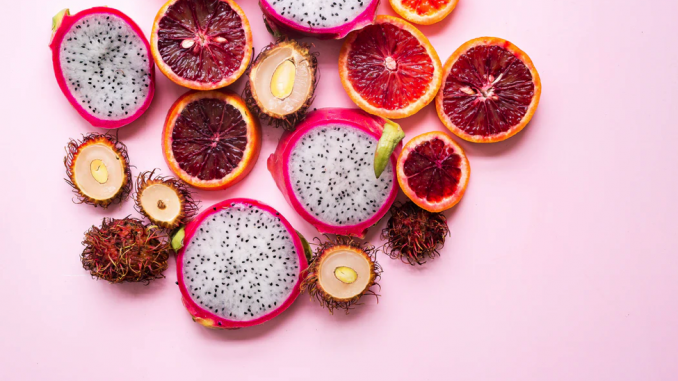
by Brittany Chibe

Source: Unsplash
Not many of us are tough enough to take on and maintain a diet successfully, let alone double-dip on two. If you’re a strict vegan who wants to tackle keto or vice versa, it is possible to incorporate the two together. A vegan ketogenic diet is one of the most restrictive diets out there, but if you’re watching your nutrient consumption carefully and have the time and patience to dedicate yourself to it, you can do it.
In this article, we’ll delve into each lifestyle and examine how they can work together. Here are five tips to take on a vegan ketogenic diet.
First, The Basics
To get started, let’s set up some definitions.
Ketogenic diets reduce carb consumption by eliminating grains, legumes, tubers, processed foods, and sweeteners. It increases the body’s healthy fat intake in an attempt to force the body into the metabolic state of “ketosis.” Ketosis is when your body’s carb intake is so low that your body turns fat into ketones, a source of energy for your brain.
Vegan diets are defined as abstaining from all animal products and by-products, including meat, fish, eggs, and dairy.
Since many people on a keto diet compensate for the lack of carbs by upping their intake of meat, fish, eggs, and dairy, people trying a vegan ketogenic diet have to come up with some creative sources to make sure you’re not nutrient deficient. As with any diet, make sure you stay hydrated throughout the day—this will help you feel full and give you energy.
1. Use Plenty of Healthy Oils
Being vegan and Keto means you’ll need a lot of nutrient-dense sources of calories. You can put oil in salad dressings, cooking oils, and sauces to increase your fat and nutrient intake. Fatty oils help you feel full and add flavor to your food.
Unhealthy oils contain high amounts of trans fats. You often find these trans fats in partially hydrogenated oils or refined vegetable oils. These oils can also promote inflammation and risk causing damage to your heart. Make sure your oils contain saturated fats and are not refined or partially hydrogenated.
Some examples of healthy oils are:
- Coconut oil
- Extra virgin olive oil
- Avocado oil
- Safflower oil
- Peanut oil
Be careful not to purchase non-certified palm oil: it is often unsustainably sourced and hard on the environment. Palm oil that is certified sustainable can be a good source of vitamins A and E, but only if you can find it from a verified, trusted source.
2. Increase Your Intake of Fiber-rich Vegetables
You’ll need a significant amount of fiber in your diet to aid in digestion and keep yourself feeling full. Instead of grains and legumes, organic, fiber-rich vegetables that grow above ground will have to take their place.
Some examples of fibrous vegetables are:
- Avocado
- Carrots
- Beets
- Swiss chard
- Artichokes
- Broccoli
- Kale
- Spinach
In addition to fiber, these vegetables are also packed with vitamins and protein. These should make up the bulk of a vegan ketogenic diet.
3. Eat a Wide Variety of Nuts and Seeds
Without starches and legumes, your body will be craving certain nutrients and fats it can’t find in many other sources. Good vegan and keto substitutes for these nutrients are found in nuts and seeds.
Macadamia nuts are one of the best nuts for the keto diet because they contain a high amount of healthy monounsaturated fat. They also have one of the lowest amounts of carbs compared to other nuts.
Whether you classify it as a nut or not, coconuts are also fantastic for both keto and vegan diets. Replace dairy products with coconut milk or coconut cream for a great source of fat, calories, and important minerals. Eat coconut meat as a snack throughout the day or add it to a salad.

Source: Unsplash
4. Find Multiple Vegan Protein Sources
Protein from animal products contains every essential amino acid your body needs. Veganism can also provide these proteins; however, you need more than one plant source to obtain the full range of amino acids.
A well-known source of protein is, of course, soy. Great soy options include tofu, tempeh, seitan, and edamame. Hemp seeds are also a fantastic source of both fiber and protein.
Just remember: when you are trying to avoid protein deficiency on a vegan diet, you need a wide variety of protein sources to supply your full range of amino acids.
5. Stop If You Feel Fatigued, Weak, or Dizzy
This diet is very strict and is not for everybody. If you are pregnant, an athlete, anemic, or diabetic, this diet may not be suitable for you.
Vegan and ketogenic diets have been independently observed to promote weight loss and reduce the risk of heart disease and diabetes. If you focus too much on weight loss and not enough on providing your body with the correct nutrients, however, you run the risk of developing a deficiency.
Every body is different, too. If you feel any unusual symptoms, stop immediately. As with every diet, listen closely to your body and give yourself ample time to adjust.
(Brittany Chibe founded Within/Without to provide a healthy alternative to processed granola. Her paleo/keto certified soft-baked granola offers guiltless, good-for-you snacks using clean, whole ingredients. She is passionate about supporting mindful snacking.)





Be the first to comment